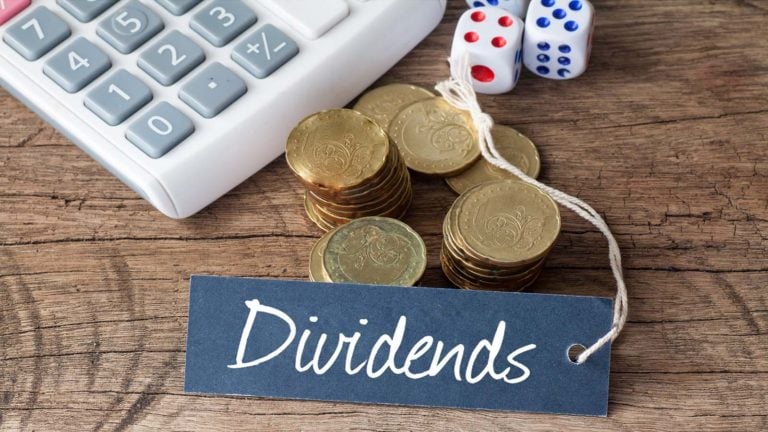One of the more common questions among those new to investing is, “What are dividend stocks?” It’s an important question for new investors, particularly those looking to stocks as a way to generate income.
Obviously, the short answer to “what is a dividend stock?” is that it is a stock that pays a dividend. But even in that answer, there’s quite a bit of nuance. And understanding why dividends are attractive — and why they sometimes can create real risk — is important as well.
Dividends themselves are a basic concept. But as is the case so often in the market, a basic concept can hide quite a bit of complexity.
What Are Dividend Stocks?
A dividend is a distribution from a company to its shareholders. On publicly traded markets, distributions usually are made quarterly — but not always. Some companies pay annually. A few, most notably Realty Income (NYSE:O), pay monthly dividends. Companies also can offer “special” dividends, one-time payments that often are accompanied by a major event. A business unit may have been sold, or profits may have accumulated to the point that the corporation itself has “too much” cash.
It’s important to remember that dividend payments are not like interest payments on a bond, or in a savings account. This is a common mistake investors make. Dividend payments are not fixed. The board of directors decides when, how much, and how often to pay a dividend.
That can be good news — or bad news. The good news is that dividend payments can rise over time. Income investors generally target companies with a history of steady, annual increases. So-called “Dividend Aristocrats” have raised their dividends every year for at least 25 years. Among the more well-known of that group are Exxon Mobil (NYSE:XOM), Kimberly Clark (NYSE:KMB), and Coca-Cola (NYSE:KO).
But the bad news is that dividends can be cut — or even eliminated. If profits start declining, or a company has too much debt, it simply may not be able to continue distributing cash to shareholders. Telecom Frontier Communications (NASDAQ:FTR
) and toymaker Mattel (NASDAQ:MAT) are among the companies that have stopped paying a dividend recently. General Electric (NYSE:GE) halved its dividend last year, a stunning move by a company that for decades had been a reliable dividend stock.
Higher Yield Is Better, Right?
Investors looking for income — like those in retirement — often are attracted to dividend stocks. They pay more income than bank accounts (at least at the moment) and offer upside as well.
And those investors quite often consider what is known as the “dividend yield.” The yield is calculated as the annual total of the dividend, divided by the current share price. If ABC pays $1 per quarter in dividends (a total of $4 per year) and costs $100, it has a yield of 4%. ($4/$100.)
Intuitively, it would seem that a higher yield would be better. After all, getting 6% or 7% is better than 2% or 3%, right? But that is not always the case, for two reasons.
First, a dividend payment in theory lowers the value of the business by an equal amount. When ABC pays that $1 per share to shareholders owning the company’s 10 million shares, the next day it has $10 million less in its corporate bank account. A dividend payment is not like a bond or savings account payment. It is not added on to the value of the investor’s account. Rather, the control of that cash simply shifts from the corporation to the shareholder.
Secondly, a high dividend yield often suggests that either the dividend won’t grow — or that it may be cut. Mattel’s dividend yield cleared 7% last year, not long before the cut. At one point, Frontier’s dividend yield cleared 20%. That wasn’t a sign that investors could get more than one-fifth of their money back over the next year. It was a sign that the company was going to stop paying that dividend — which it soon did. In both cases, investors faced a double whammy. Not only were the dividends eliminated — but the stocks themselves fell on the news.
Dividend Stocks Aren’t That Different
That’s not to say that all high-yield stocks are bad — or dangerous. But what is most important to remember about dividend stocks is that they’re stocks first and dividend payers second. Even the consistently highest dividend payers generally see their yield top out at 6-7% at most. For the steadiest payers, yields of 2.0-3.5% are most common.
The most important consideration in dividend stocks isn’t any different than for a stock that doesn’t pay a dividend: Investors need to do their due diligence. They need to understand the business. Risks have to be evaluated. Price and expectations need to be understood.
Dividend stocks are useful for income. Reinvesting those dividends through so-called “DRIP plans” can amplify gains over time. And dividend stocks usually — though, again, not always — are more mature, and lower-risk stocks.
But again — they’re still stocks. The difference between a 6% yield and a 3% yield isn’t that an investor “makes” 3 percentage points a year less on the latter stock. Usually, it’s at least a signal that the market expects more dividend safety and growth from the 3% yielde than its counterpart. Dividend stocks are like everything else in investing: To get more return, generally investors have to take on more risk, or sacrifice growth.
There is no free lunch. Four (or one) dividend payments a year don’t change that essential investing rule.
As of this writing, Vince Martin has no positions in any securities mentioned.

